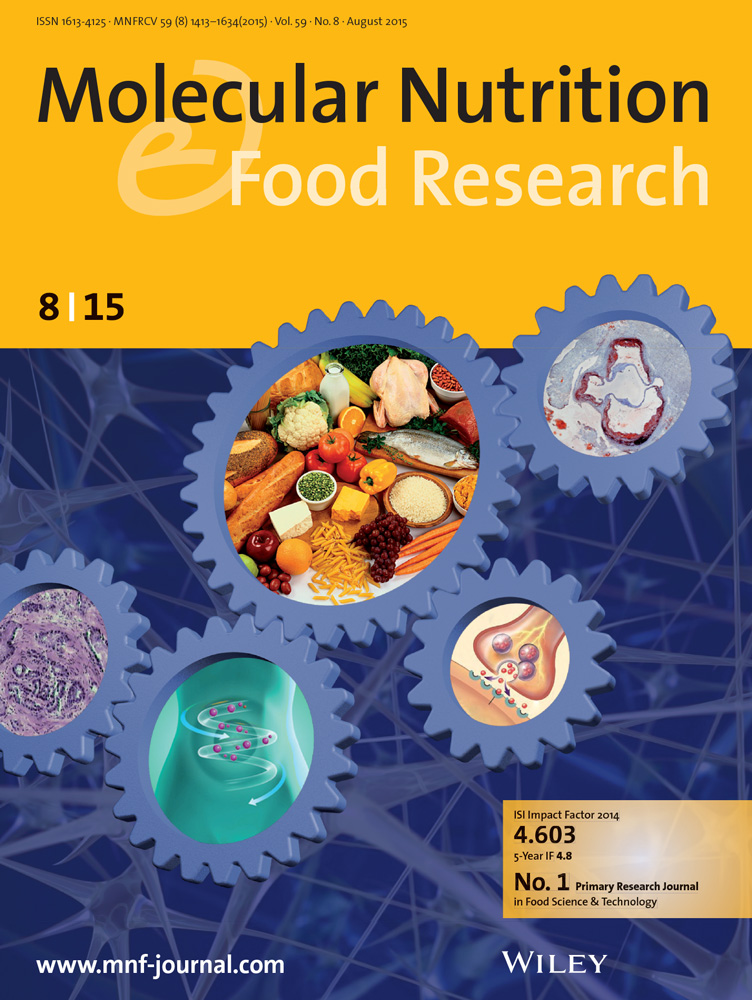Sustainable Solutions From Silkworms: Antheraea assamensis Helfer Oil Regulates Oxidative Stress, Lipid Metabolism, and Liver Health-Navigating Future Food Challenges.
IF 4.2
2区 农林科学
Q1 FOOD SCIENCE & TECHNOLOGY
引用次数: 0
Abstract
Silkworms are emerging as a sustainable food source to address global food security, with their proteins recognized for nutritional and medicinal benefits. However, the impact of silkworm oil on immunological and pharmacological effects remains unexplored. This study explores the effects of the muga (Antheraea assamensis Helfer) silkworm pupal oil fraction (MP) on palmitic acid (PA) induced hepatic steatosis, inflammation, and oxidative stress. The findings revealed that MP supplementation significantly reduced lipid accumulation in PA treated CC1 hepatocytes as demonstrated by Oil red O and Nile red staining. Mechanistic investigations showed that MP modified the protein expressions and mRNA levels of genes involved in lipogenesis and cholesterol homeostasis, while upregulating genes responsible for β-oxidation. Additionally, MP treatment enhanced the phosphorylation of AMPK, a crucial metabolic energy sensor, and reduced the phosphorylation of NF-κB, which is associated with inflammation. The study concludes that the muga silkworm pupal oil fraction (MP) has the potential to serve as an effective nutraceutical, contributing to the development of therapeutic strategies for managing dysregulated lipid metabolism and associated inflammatory conditions.蚕的可持续解决方案:柞蚕蚕丝油调节氧化应激、脂质代谢和肝脏健康——未来食物挑战的导航。
蚕正在成为解决全球粮食安全问题的可持续食物来源,其蛋白质具有公认的营养和药用价值。然而,蚕油对免疫和药理作用的影响仍未被探索。本研究探讨蚕蛹油提取物(MP)对棕榈酸(PA)诱导的肝脏脂肪变性、炎症和氧化应激的影响。结果显示,通过油红O和尼罗红染色,MP的补充显著降低了PA处理的CC1肝细胞的脂质积累。机制研究表明,MP改变了参与脂肪生成和胆固醇稳态的基因的蛋白质表达和mRNA水平,同时上调了负责β氧化的基因。此外,MP处理增强了关键代谢能量传感器AMPK的磷酸化,并降低了与炎症相关的NF-κB的磷酸化。该研究得出结论,蚕蛹油组分(MP)有潜力作为一种有效的营养保健品,有助于开发治疗脂质代谢失调和相关炎症的治疗策略。
本文章由计算机程序翻译,如有差异,请以英文原文为准。
求助全文
约1分钟内获得全文
求助全文
来源期刊

Molecular Nutrition & Food Research
工程技术-食品科技
CiteScore
8.70
自引率
1.90%
发文量
250
审稿时长
1.7 months
期刊介绍:
Molecular Nutrition & Food Research is a primary research journal devoted to health, safety and all aspects of molecular nutrition such as nutritional biochemistry, nutrigenomics and metabolomics aiming to link the information arising from related disciplines:
Bioactivity: Nutritional and medical effects of food constituents including bioavailability and kinetics.
Immunology: Understanding the interactions of food and the immune system.
Microbiology: Food spoilage, food pathogens, chemical and physical approaches of fermented foods and novel microbial processes.
Chemistry: Isolation and analysis of bioactive food ingredients while considering environmental aspects.
 求助内容:
求助内容: 应助结果提醒方式:
应助结果提醒方式:


